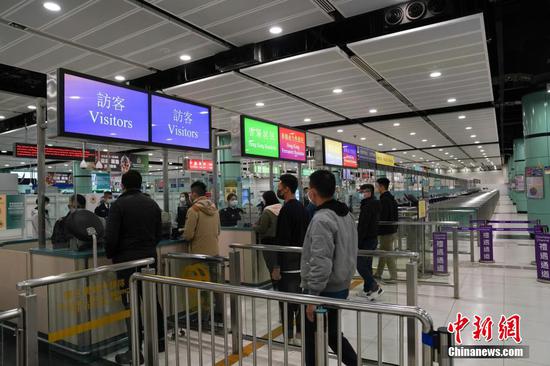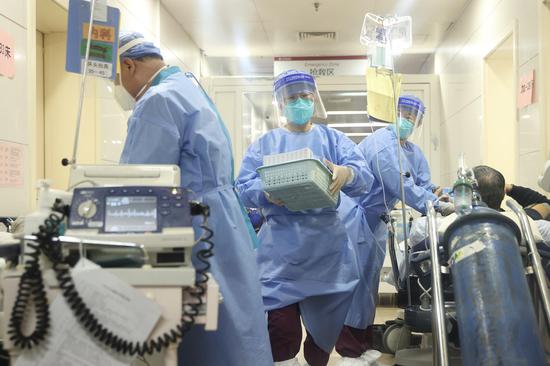
A nuclear power unit in Fuqing, East China's Fujian province. (Photo/Xinhua)
The world's first commercial onshore small modular reactor project is expected to play a major role in facilitating the country's low-carbon energy transition while helping ensure domestic energy security, said industry experts.
Small modular reactors, which are defined as advanced reactors producing electricity of up to 300 megawatts per module, can meet the demand for flexible power generation for a wider range of users and applications, including island power generation and industrial park heating. It further offers the possibility of combining nuclear with alternative energy sources, including renewables, and sharing broad application prospects, said Luo Zuoxian, head of intelligence and research at the Sinopec Economics and Development Research Institute.
As China has been leading in small modular reactor projects, chances are high that the technology can further benefit countries and regions participating in the Belt and Road Initiative, as well as nations in the Middle East, including Saudi Arabia and the United Arab Emirates, Luo said.
Linglong One, the world's first commercial onshore small modular reactor demonstration project, began installation of its nuclear island at Changjiang nuclear power plant in South China's Hainan province on Nov 30, according to its developer China National Nuclear Corp.
A nuclear island is the heart of a nuclear power plant. Other major facilities, including the power station's pressure vessel and steam generator, will be installed in the future, said the company.
Based on China's independent research and intellectual property rights, the construction of the multi-functional small modular and pressurized water nuclear reactor is also the world's first reactor of this type to be approved by the International Atomic Energy Agency on the basis that it is built to serve the region's diverse power needs, it said.
Commencing construction in July 2021, the Linglong One project is characterized as being highly secure with a short construction period and flexible deployment among other advantages. It is expected to take about 58 months to complete construction.
The reactor could be used as a distributed energy source, in addition to meeting other needs such as seawater desalination, regional heating and industrial heating. Each unit at Linglong One has a power capacity of 125,000 kilowatts, capable of generating 1 billion kilowatt-hours of electricity annually after going into operation, said CNNC.
Global interest in small and medium-sized or modular reactors has been increasing due to their ability to meet the need for flexible power generation for a wider range of users and applications and replace aging fossil fuel-fired power plants, according to the International Atomic Energy Agency.
With an enhanced safety performance and better upfront capital cost affordability, they offer options for remote regions with less developed infrastructures and the possibility to combine nuclear and alternate energy sources, including renewables, it said.
Based on a report released by the agency on the projections of the potential growth of nuclear power over the coming decades, many countries are revising their national energy policies, leading to decisions to extend the operational lives of existing reactors, plans for construction of advanced reactors and the development and deployment of small modular reactors.
There are about 50 small modular reactor designs and concepts globally, with most of them in developmental stages and some being near-term deployable. There are currently four small modular reactors in advanced stages of construction in Argentina, China and Russia, it said.
According to Luo, the project is an example of China's strengthened investment in energy projects, as China is mounting efforts to guarantee energy supplies while actively pushing for the transition toward low-carbon and green energy sources.
"Nuclear energy, as non-fossil energy, has become a major non-fossil fuel option against the backdrop of a global energy shortage and it will also play a crucial role in ensuring the stability and consistency of a new power system dominated by new energy in the country," he said.
"It is believed China will continue to support nuclear energy as an integral part of its energy supply."


















































 京公网安备 11010202009201号
京公网安备 11010202009201号